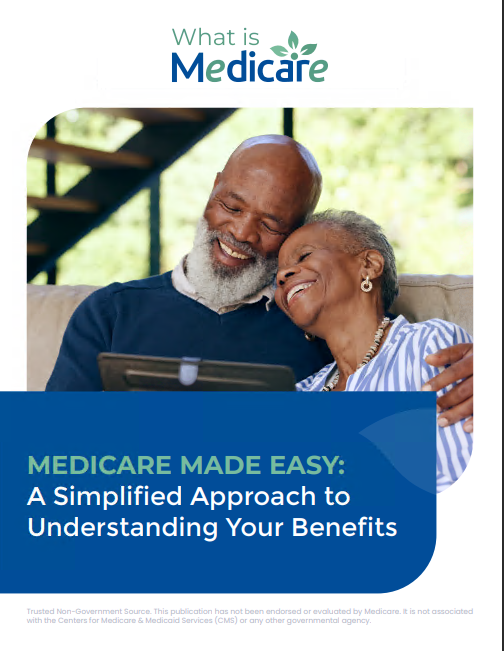Key Takeaways
- While Medicare Part A may appear “free” for most beneficiaries, significant hidden costs can arise in the form of deductibles and coinsurance for hospital stays and skilled nursing care.
- It’s essential to understand the structure of Medicare Part A to avoid surprise expenses and plan for comprehensive healthcare coverage.
Medicare Part A: The Costs You Don’t See Coming
When we think about Medicare Part A, many of us assume it’s free, especially if you’ve paid Medicare taxes through your working years. But the truth is, even though you might not pay a monthly premium, there are several other costs that can sneak up on you when you least expect them. These include deductibles, co-payments, and coverage limitations that aren’t always obvious.
In this article, I’ll walk you through what you need to know about Medicare Part A—how it really works, what it costs, and how to avoid being surprised by unexpected bills.
What is Medicare Part A, and Who Gets It Premium-Free?
Medicare Part A is the part of Original Medicare that primarily covers hospital stays, skilled nursing care, and some home health services. Most people who qualify for Medicare don’t have to pay a monthly premium for Part A because they or their spouse have already contributed by paying Medicare taxes for at least 10 years (or 40 quarters). If you don’t have enough work credits, you might still be eligible for Part A, but you’ll have to pay a monthly premium.
That sounds good, right? But before you relax, thinking you’re all set, let’s dive into the actual costs you might face once you start using your Medicare benefits.
The Hospital Deductible: Where ‘Free’ Starts to Feel Expensive
The most significant cost associated with Medicare Part A is the inpatient hospital deductible. For 2024, the deductible is $1,632 per benefit period. But what does “benefit period” mean?
It’s not the same as a calendar year. A benefit period begins when you’re admitted to a hospital or skilled nursing facility and ends after 60 consecutive days without receiving inpatient care. If you’re hospitalized again after the benefit period ends, you’ll pay the deductible again. So, if you have multiple hospitalizations in a year, you might have to pay that $1,632 more than once.
Extended Hospital Stays: Daily Co-Payments Add Up Fast
Once you’ve met the deductible, Medicare Part A covers the first 60 days of your hospital stay at no extra cost. But if your hospital stay extends beyond 60 days, you start paying daily coinsurance charges.
- From day 61 through day 90, you’ll pay $408 per day.
- After 90 days, you can use your lifetime reserve days, which allow you an additional 60 covered days in your lifetime, but at a cost of $816 per day.
Once you’ve used up your lifetime reserve days, you’ll have to cover all hospital costs out of pocket for any future stays beyond 90 days within a benefit period. That can add up to substantial costs for longer hospital stays.
Skilled Nursing Facility Costs: It’s Not Always Covered
Medicare Part A also covers stays in a skilled nursing facility (SNF), but only under certain conditions. First, you must have a qualifying hospital stay of at least three days to be eligible for SNF care.
If you qualify, Medicare Part A will cover the full cost of your skilled nursing care for the first 20 days. But starting on day 21, you’ll be responsible for a daily coinsurance of $204 per day. And after 100 days, you’ll have to pay all costs out of pocket, as Medicare Part A coverage for SNF care ends.
This limited coverage means that for long-term stays, you’ll either need to dip into your savings or consider additional insurance options to help cover the costs.
What Medicare Part A Won’t Pay For
Medicare Part A has its limits. It’s important to understand what isn’t covered so you can plan accordingly. Here are some major services that Part A won’t cover:
Outpatient Care and Doctor Visits
Medicare Part A is designed for inpatient care. So, any outpatient treatments, routine doctor visits, diagnostic tests, and preventive services fall under Medicare Part B, which requires a separate premium and deductible.
Long-Term Custodial Care
If you need help with activities of daily living, like bathing, dressing, or eating, this is considered custodial care, and Medicare Part A won’t cover it. This kind of care is often required in nursing homes for long-term residents, and without separate long-term care insurance, these costs will fall on you.
Prescription Drugs
While Medicare Part A will cover any medications you need during your hospital stay, it does not cover prescription drugs that you take at home. For that, you’ll need to sign up for Medicare Part D, which is specifically designed to cover outpatient prescription drugs.
Avoiding Unexpected Costs: Planning for Out-of-Pocket Expenses
Even though Medicare Part A covers a substantial portion of inpatient hospital and skilled nursing costs, the deductibles, coinsurance, and other limitations can leave you with significant out-of-pocket expenses.
To protect yourself from these hidden costs, many people opt to complement their Medicare Part A coverage with a Medicare Supplement (Medigap) plan, which can help cover the deductibles and coinsurance. Some also choose a Medicare Advantage (Part C) plan, which may bundle Parts A, B, and D together and offer additional benefits, though these plans can come with their own costs and limitations.
Understanding Benefit Periods: Timing is Everything
As mentioned earlier, the benefit period in Medicare Part A plays a significant role in determining how often you’ll pay the deductible. Remember, each benefit period starts when you’re admitted to a hospital or skilled nursing facility and ends when you haven’t received inpatient care for 60 days.
This means that if you have multiple hospitalizations spaced out over the year, you could end up paying the $1,632 deductible more than once. Planning your care and understanding how benefit periods work can help minimize out-of-pocket costs.
Hospice Care: The One Area with Minimal Costs
There’s one area where Medicare Part A stands out as particularly beneficial: hospice care. If you’re terminally ill and choose to receive hospice care, Medicare Part A covers most related costs. This includes not only medical care but also emotional and respite support for your family caregivers.
Medicare Part A’s hospice benefit is one of the few areas where you won’t face substantial out-of-pocket expenses, though there may be small co-payments for certain prescription drugs related to your care.
Medicare Part A: Not Entirely Free, but Manageable with the Right Planning
Now that you know more about the costs associated with Medicare Part A, it’s clear that while it provides essential coverage for inpatient care, it’s not the comprehensive freebie some might expect. Between deductibles, coinsurance, and limits on covered services, the potential for out-of-pocket expenses is real.
However, with proper planning—whether by understanding benefit periods, adding supplemental coverage, or budgeting for potential costs—you can navigate these expenses and make your Medicare coverage work better for you.










